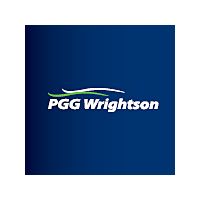
Dairy herd and beef youngstock management in autumn
PGG Wrightson’s Animal Production Technical Team, comprised of Laura Pattie, Jo Harris, Andrew Dowling and Jason Leslie trains and supports our national network of store teams and Technical Field Representatives. With plenty of knowledge and advice to impart, they share what to focus on with your dairy herd and beef youngstock heading into autumn.
Dairy herd late lactation
It is timely at late lactation to reflect on what went well this season and what can be improved on, including assessing the impacts of any changes made during the season. Ask yourself: How did calving go? Were there many metabolic issues? Did cows peak well? How did mating go?
Spring-calving cows are in late lactation, and this is an important time to focus on body condition for the coming season. Body condition score (BCS) at calving impacts the cow’s production and reproductive outcomes for the season. Condition score your herd and prioritise light cows. Supplementary feed, once-a-day milking or selective dry-off are tools that can improve live weight gain in lighter cows.
If the feed supply has been challenging, it can take time and quality feed to achieve BCS. It is best to proactively plan to meet a target of BCS 5 for mixed-age cows and BCS 5.5 for first and second-time calvers by the start of calving.
To extend lactation when the feed supply is short, once-a-day milking is an option that reduces energy demand and feed requirements.
Drying off lower-producing cows also helps to decrease feed demand and frees up the feed available for the rest of the milking herd. This helps to maintain per-cow production and efficiency.
It can be difficult to maintain quality in summer pastures, especially those prone to a summer dry, resulting in a decreased plane of nutrition. As milk yield decreases, somatic cell counts and mastitis can be an issue. Make sure good milking hygiene practices are maintained and a teat spray is used after every milking. If grading is due to somatic cell count, some cows may need to be dried off early.
Autumn calving cows will be close to calving. Often feed supply is behind feed demand for autumn calving herds, and supplementary feed is required. Summer pastures are often lower in energy and protein and high in fibre. Choose a supplement with quality protein and high energy to support cows in early lactation. Ensure cows are fully fed so they can reach their potential peak milk yield.
Macro minerals are needed throughout lactation. Calcium is needed to rebuild calcium stores for the coming season, though stop supplementing four to six weeks before the planned start of calving. Be aware that pasture, maize silage and grains are low in magnesium, and this mineral is important for the digestion of feed along with nerve and muscle function.
Achieving youngstock live weight targets
Autumn is a good time to review your heifer management and determine whether live weight targets have been reached.
Six-month-old heifers should be 30 percent of adult weight and pregnant 18-month-old R2 heifers should be at 75 percent. Achieving these targets now ensures they reach puberty and cycle well at 15 months or calve down at 24 months as well grown heifers at BCS 5.5. Daily minimum gains of 700 g per day are required for stock to reach 90 percent of live weight by 22 months of age for a 500 kg mature live weight target.
Approximately a quarter of heifers fail to reach their target live weight at 22 months in New Zealand. These animals are disadvantaged in the herd, often leading to early culling.
If calves are not at 30 percent of adult weight, review your calf-rearing system. Was there sufficient energy, protein and fibre available for the growing calf to achieve gains of greater than 700 g per day? Though this amount is preferably closer to 1 kg per day through their first six months. Were there higher disease rates both pre and post-weaning? If yes, seek advice to look at options to improve these outcomes during rearing.
In many parts of the country, R1 animals struggle post-weaning to achieve optimal live weight gain in their first summer and autumn. This results in them being more than 30 kg underweight before winter starts.
Contributing factors include a lack of feed quality without enough energy and protein within a balanced diet, along with parasite challenge of both coccidiosis and worms, and trace element deficiencies. Other diseases can take advantage of poor health at this time too due to a lowered immunity.
Regular monthly weighing helps achieve better outcomes. Animals below target live weight need help. This may mean using supplementary feed, which is a good way to correct energy and protein deficits. Identifying the deficits first helps you choose the best supplement.
R1 heifers are susceptible to all worm species. With drench resistance more widespread in cattle, use a triple oral combination product where possible, repeated monthly from now through until mid-winter.
Pregnant R2 heifers can also suffer from worms with Ostertagia generally the main culprit. Targeted use of products from the mectin family is the best product choice. Trace element status should be monitored via bloods or liver biopsies to check the animal's levels are adequate. The three main elements for growth are selenium, cobalt and copper.
To discuss and formulate a nutritional and animal health programme for your farm, contact your local PGG Wrightson Technical Field Representative.
